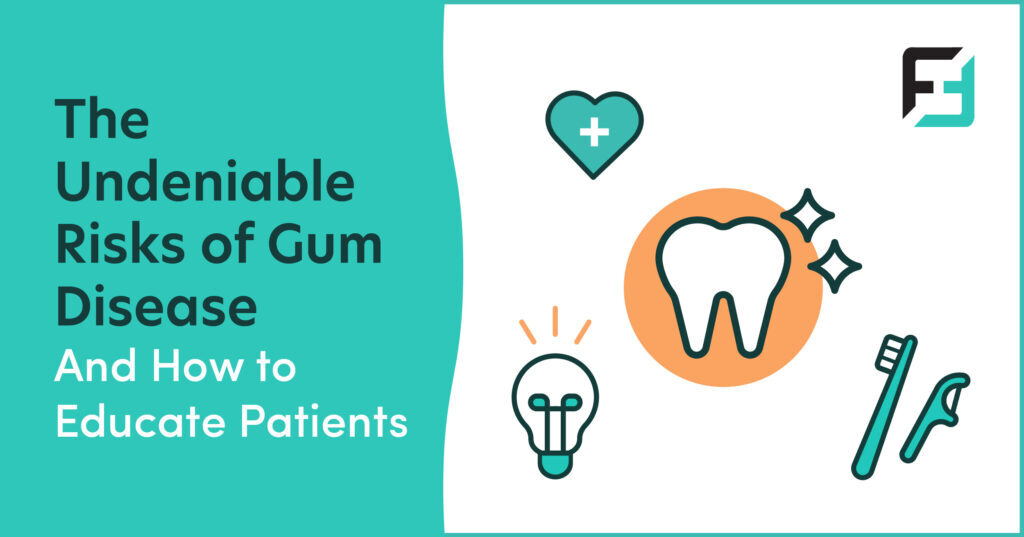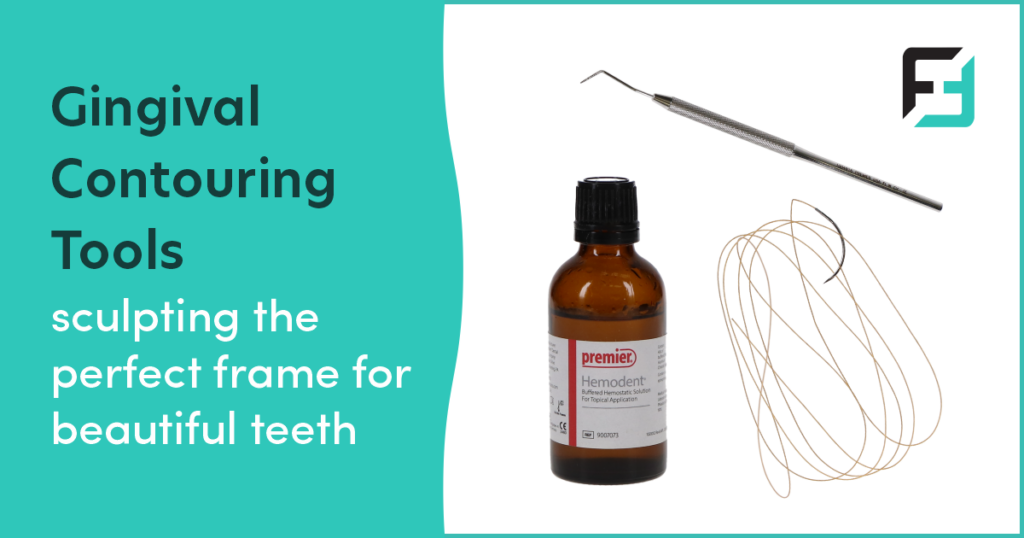Understanding the causes, symptoms, and treatment options of gum disease
We all know that maintaining optimal oral health is crucial for our overall well-being, but sometimes it can be hard to take the proper care. As dental professionals, our responsibility is to ensure our patients are well informed about the dangers of oral conditions, such as the risks of gum disease, and how to prevent them.
One of the most prevalent conditions is gum disease, also known as periodontal disease, which is a chronic bacterial infection that affects the tissues and structures surrounding the teeth. The buildup of plaque, a sticky film of bacteria that forms on the teeth and gums, is the primary cause of gum disease. Ultimately, plaque can buildup due to a lack of proper oral hygiene practices, harden, and form tartar, which further contributes to risks of gum disease.
It is crucial for dental professionals to educate their patients about the causes and symptoms of gum disease to inspire prevention and early detection. And when prevention is not an option or unsuccessful, early detection can lead to more effective and timely treatment options. This article will delve into the various risks of gum disease and equip dental professionals and public alike with the knowledge necessary to identify and manage gum disease.
What Are The Causes of Gum Disease

Gum disease is primarily caused by the buildup of plaque, which contains harmful bacteria that release toxins, irritating the gums and leading to inflammation. If not removed through proper oral hygiene practices, plaque can harden and form tartar, further contributing to gum disease. There are several factors can increase the risks of gum disease.
- Tobacco use: Smoking or chewing tobacco can significantly increase the risk of gum disease.
- Hormonal changes: Hormonal fluctuations during puberty, pregnancy, and menopause can make gums more susceptible to gum disease.
- Diabetes: People with diabetes are at a higher risk of developing gum disease due to impaired immune function.
- Genetic predisposition: Some individuals may be more genetically susceptible to gum disease.
- Medications: Certain medications, such as anticonvulsants and oral contraceptives, can increase the risk of gum disease.
- Poor nutrition: A diet lacking essential nutrients can weaken the immune system, making gums more susceptible to infections.
Not all the above factors are preventable; however, being more aware of the risks can help one make better decisions about their oral healthcare. It is important to educate the public on the risks associated to their unique situations so they can take charge of their oral and overall well-being.
Symptoms of Gum Disease

There are common signs and symptoms associated with gum disease that can tell you that something is not right. While everyone will not experience all these symptoms, it is important to recognize any signs and symptoms to ensure early detection and intervention. It is important to educate patients when to visit a dentist to avoid the risks of gum disease. Whether they are due for a checkup or not, it is crucial to know when to get a professional's opinion.
- Gum inflammation: Red, swollen, or tender gums are often the first signs of gum disease.
- Bleeding gums: Gums that bleed during brushing or flossing.
- Persistent bad breath: Foul breath that doesn't improve with oral hygiene.
- Receding gums: As gum disease progresses, the gum tissue may start to pull away from the teeth, exposing the tooth roots.
- Loose or shifting teeth: Advanced gum disease can cause teeth to become loose or change their position.
- Pus formation: In severe cases, the presence of pus between the teeth and gums indicates an infection.
The above symptoms may not always indicate gum disease; however, it is imperative to always check with a dental professional, just in case. With the presence of any symptom, a dental professional will preform a comprehensive examination of the gums, teeth, and oral tissues to assess the presence and severity of gum disease. Furthermore, dental X-rays can reveal bone loss, a common complication when gum disease has advanced to a later stage.
Treatment Options for Gum Disease

Early detection and intervention are vital in managing the dangers and risks of gum disease efficiently and effectively. The treatment options for gum disease depend on the severity of the condition and when it was detected.
Non-surgical Options
- Professional dental cleaning: Scaling and root planing, also known as deep cleaning, are common non-surgical procedures to remove plaque and tartar from the teeth and below the gum line.
- Antibiotics: In some cases, antibiotics may be prescribed to control bacterial infection and reduce inflammation.
Surgical Options
- Flap surgery: This surgical procedure involves lifting the gums to remove tartar deposits and repositioning the gums for improved oral hygiene access.
- Bone grafting: In severe cases where bone loss has occurred, a bone graft may be necessary to regenerate the lost bone tissue.
- Gum grafting: This procedure involves taking tissue from another part of the mouth and grafting it onto the receding gums to restore gum tissue.
Conclusion
Gum disease is a prevalent oral condition that can have serious consequences if left untreated. Dental professionals must have a comprehensive understanding of the risks of gum disease. To provide effective care, dental professions should understand causes, symptoms, and treatment options for gum disease. Prevention plays a crucial role in maintaining oral health and preventing gum disease. Dental professionals can guide patients on preventive measures, such as effective oral hygiene practices, regular dental check-ups, lifestyle modifications, and signs and symptoms.
By promoting early detection, appropriate treatment, and preventive measures, dental professionals can play a vital role in maintaining their patients' oral health and overall well-being by reducing the risks of gum disease. Through patient education and personalized care, dental professionals can combat gum disease and promote healthier smiles for their patients.




